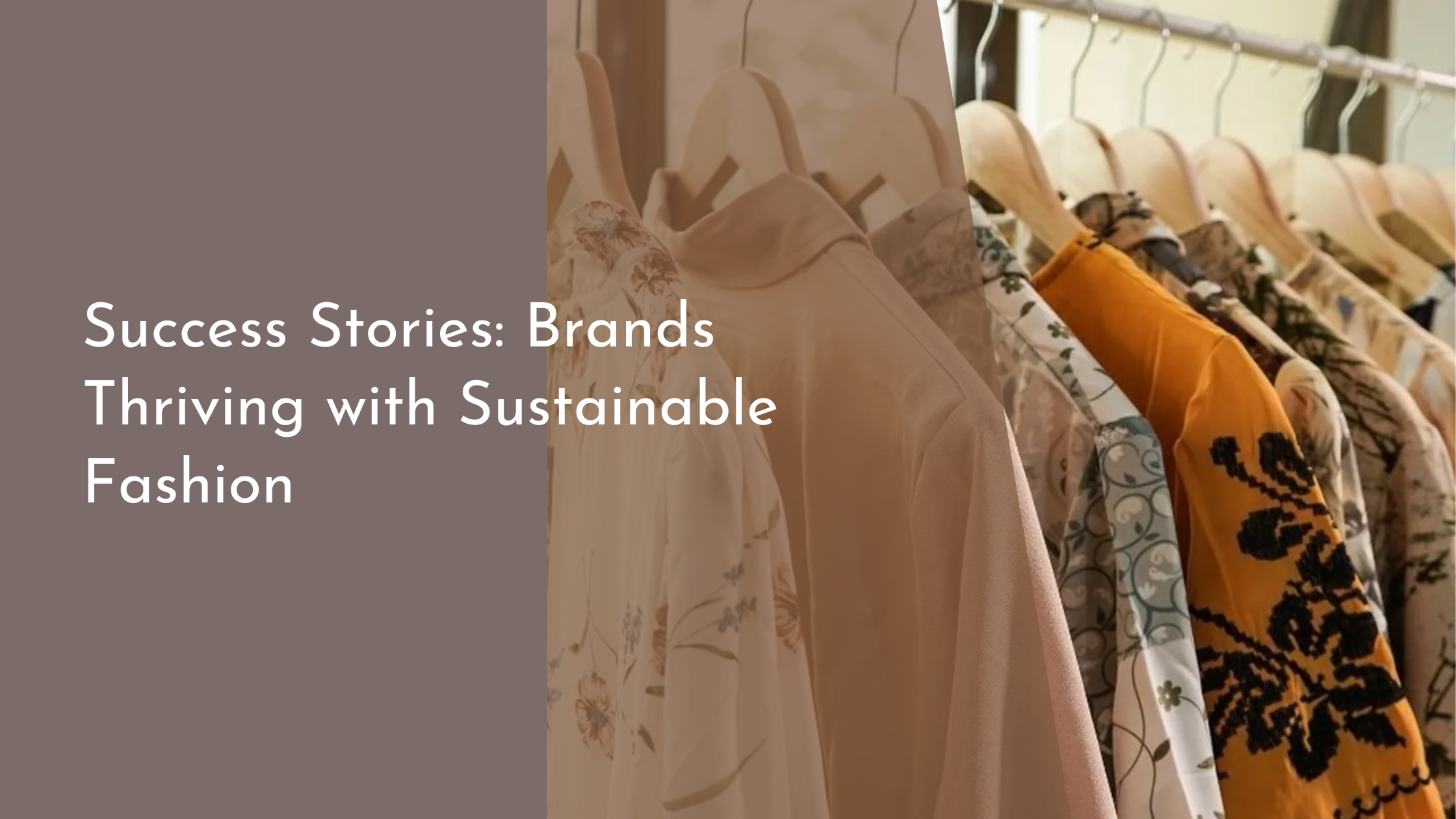Success Stories: Brands Thriving with Sustainable Fashion
In recent years, the fashion industry has undergone a seismic shift, driven by a growing awareness of environmental issues and consumer demand for ethical practices. This transformation has given rise to an array of successful brands that have embraced sustainable fashion, proving that eco-friendly practices can indeed align with profitability. Through innovation and a commitment to sustainability, these brands are redefining what it means to thrive in the modern marketplace. Let’s delve into how they are achieving remarkable success.
Embracing Eco-Friendly Practices in Fashion
Sustainable fashion brands are increasingly prioritizing eco-friendly practices, starting with the production process itself. Traditional methods often involve significant waste and pollution, but forward-thinking companies are opting for more sustainable alternatives. They are implementing closed-loop systems, which recycle materials back into production, significantly reducing waste. Brands like Eileen Fisher have made headlines for their initiatives to take back old garments in exchange for store credit, which are then remade into new pieces or responsibly recycled. By adopting such circular fashion models, these companies demonstrate that sustainability can be both practical and profitable.
Beyond the production process, these brands are also focusing on supply chain transparency. Consumers today are more likely to support brands that provide clear insights into their sourcing and manufacturing processes. Patagonia, for example, has been a pioneer in this field, offering customers access to detailed information about where their garments come from and the environmental practices employed. By keeping the supply chain open and honest, these labels not only build trust with consumers but also encourage a broader industry movement towards more ethical practices.
Innovative Materials Transforming the Industry
The shift towards sustainability has led to the rise of innovative materials that are transforming the fashion landscape. From organic cotton and hemp to recycled polyester and even fabric made from ocean plastic, the variety of sustainable materials available today is vast and ever-growing. One notable example is Tencel, a fabric made from sustainably sourced wood pulp, which boasts a silky texture and breathability while also being biodegradable. Brands such as Stella McCartney have championed the use of such innovative materials, proving that environmentally friendly choices can offer both luxury and comfort.
Another groundbreaking material making waves in the industry is Pinatex, derived from pineapple leaf fibers. This vegan leather alternative has been adopted by numerous brands, including Hugo Boss, for its sustainable and ethical appeal. The use of Pinatex not only minimizes waste from the pineapple industry but also provides a sustainable income source for pineapple farming communities. By incorporating these innovative materials, brands are not only reducing their environmental impact but also paving the way for a future where fashion and sustainability coexist harmoniously.
Leading Brands Setting Green Standards
Several leading brands are setting the bar high for sustainability in fashion, demonstrating that ethical practices and commercial success can go hand in hand. Patagonia is a prime example of a company that has seamlessly integrated environmentalism into its brand ethos. Known for its commitment to environmental activism, Patagonia donates a percentage of its profits to environmental causes and regularly engages in campaigns to raise awareness about climate change. By prioritizing the planet alongside profit, Patagonia has cultivated a loyal customer base that shares its values.
Similarly, Swedish fashion giant H&M has made significant strides in its sustainability journey. Through its Conscious Collection, H&M incorporates organic and recycled materials, offering fashionable yet eco-friendly options to the masses. The brand’s commitment to sustainability extends to its pledge to use 100% recycled or sustainably sourced materials by 2030. By setting these ambitious targets, H&M not only leads by example but also pushes the entire industry towards more sustainable practices.
Consumer Impact: Driving Demand for Sustainability
Consumer demand is playing a pivotal role in the shift towards sustainable fashion. As awareness of environmental issues grows, more consumers are choosing brands that align with their values, prompting mainstream retailers to adapt. The rise of platforms like Fashion Revolution, which encourage consumers to ask brands “Who made my clothes?” has empowered individuals to hold companies accountable for their environmental impact. This newfound consumer consciousness is compelling brands to adopt more sustainable practices to remain competitive in the market.
Moreover, the influence of social media cannot be underestimated in driving demand for sustainable fashion. Influencers and activists are using their platforms to promote eco-friendly brands and educate followers on the importance of sustainability. This trend is creating a ripple effect, as consumers increasingly seek out and support brands that are transparent about their sustainability efforts. As this demand continues to grow, it is clear that sustainability is not just a trend but a fundamental shift in consumer behavior that is reshaping the fashion industry.
In conclusion, the success stories of brands thriving with sustainable fashion illustrate a powerful narrative of change and innovation. By embracing eco-friendly practices, utilizing innovative materials, and setting high green standards, these brands not only meet consumer demands but also lead the industry towards a more sustainable future. As consumers continue to drive this demand, it is evident that the fashion industry is on a transformative journey where sustainability is at the forefront. Through the collective efforts of brands and consumers, the dream of a truly sustainable fashion industry is becoming a tangible reality.

